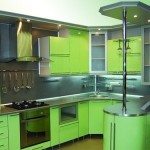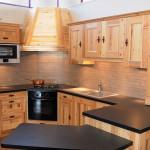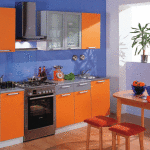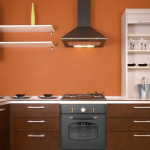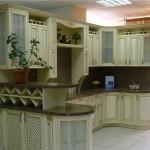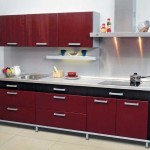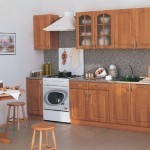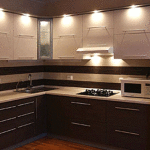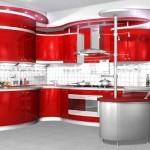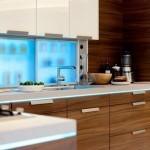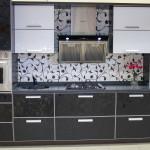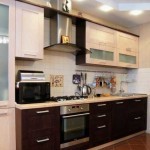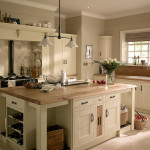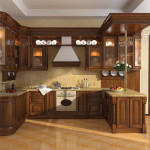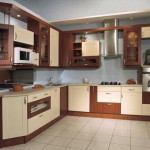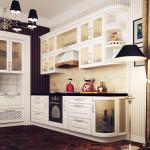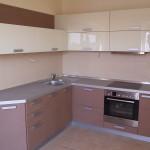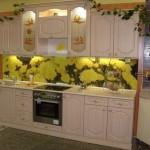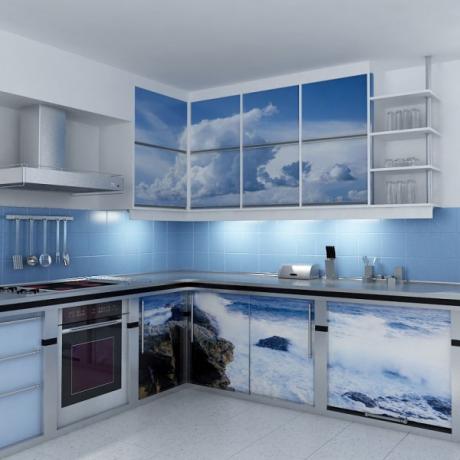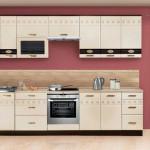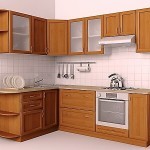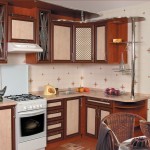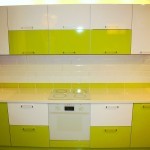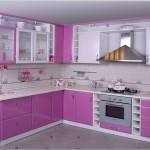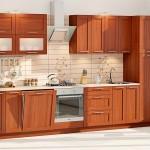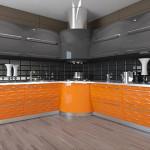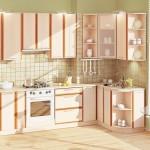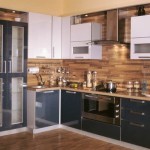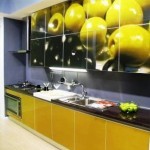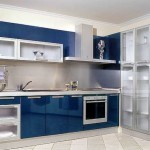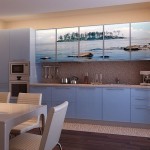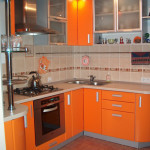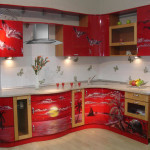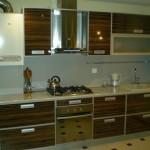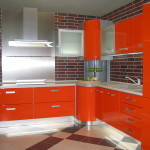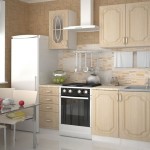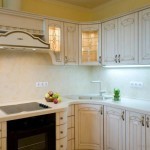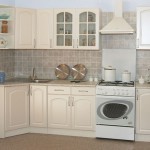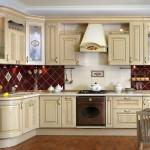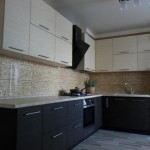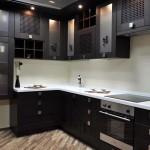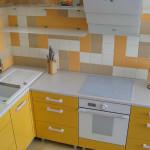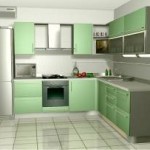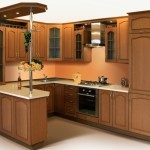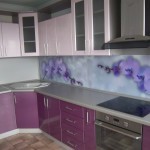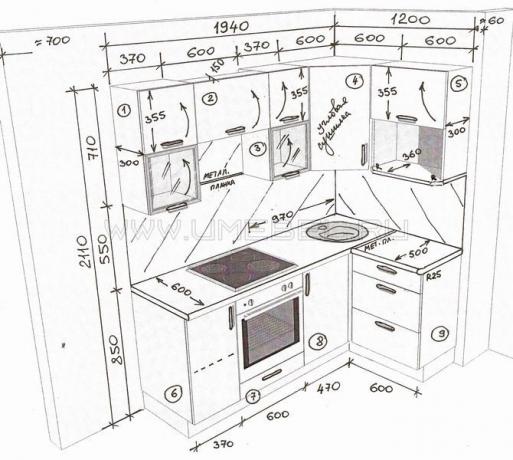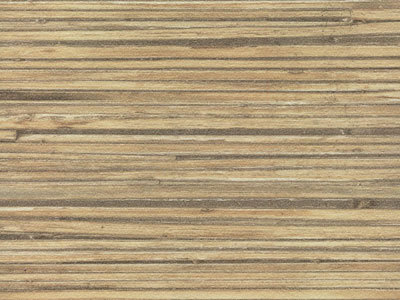Content
- 1 Characteristics of the main facade materials
-
2 Varieties of facades, as well as their pros and cons
- 2.1 Softforming or laminated facades
- 2.2 Frame facades based on MDF profile
- 2.3 MDF facades covered with PVC film
- 2.4 Wooden kitchen fronts
- 3 Conclusion
The facade is not just the appearance of the kitchen, it is its face. It is the kitchen facades that set the style and tone for the external perception of this room. Therefore, asking the question: "which facades for the kitchen is better to choose?", One should pay attention not only to their beauty, but also to the material from which they are made.
In addition, the price of facades is quite a significant value, commensurate with a complete renovation of the kitchen, so the choice of a facade for the kitchen is really a serious matter.
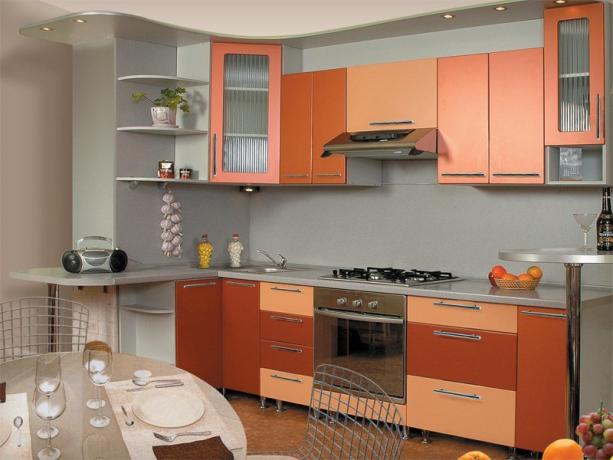
Keeping pace with the times - modern kitchen facade
Characteristics of the main facade materials
Many customers ask a question in the store: are these facades made of plastic or MDF? Let's start with the fact that plastic and MDF perform completely different tasks, and there are no facades made entirely of plastic..
MDF, translated from English, stands for medium-density fiberboard, as well as the familiar chipboard (particle board). MDF and chipboard are the basis for any facade. And plastic is just a decorative coating that is applied to any surface, be it HDF, chipboard, MDF, simple plywood, and so on.
If you delve a little into history, then for many centuries all furniture was made from natural wood, and what I would like to note separately - only the rich and wealthy could afford such a luxury people. But with the development of industrial production and science, good substitutes for wood appeared. In the 40s of the 20th century - chipboard, and in the 60s - MDF.
Interestingly, unlike wood, these materials require additional decorative processing and finishing. For example, for chipboard, materials are used that are able to hide all irregularities due to their great thickness and density: artificial stone, veneer, plastic, acrylic, and so on.
The emergence of such a material as MDF made a real revolution in the furniture world: the homogeneous and dense structure of MDF panel (almost like a tree) allows you to create unique panels with patterns, and then cover it with thin materials. This can explain the popularity of MDF material.

Facade from MDF, imitation wood
Properties and characteristics kitchen wooden facades for the kitchen determined by the species, that is, by the texture and density of the tree. As for MDF and chipboard facades, their properties largely depend on the coating and decorative materials. What are the requirements for kitchen facades? And yet, which facades are best for the kitchen?
The operating conditions of kitchen furniture can be called truly cruel, so if you are not constrained in funds, then choose facades that are resistant to high temperatures and humidity, wear-resistant, not subject to chemical attack (acetic acid, soda, boiling water and household chemicals cause significant harm during the operation of the kitchen furniture).
If the instructions for the facade provide for all these actions and the appearance of the material remains unchanged over time, then you really found what you need.
Varieties of facades, as well as their pros and cons
If you are still thinking about which kitchen facade is better to choose, then we advise you to get acquainted with the types listed below.
Softforming or laminated facades
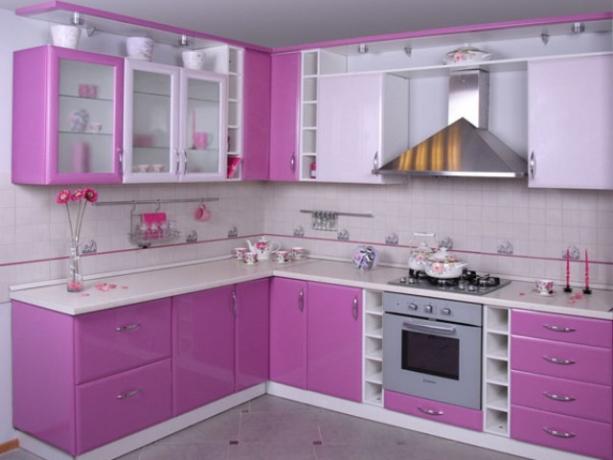
Laminated kitchen facade
Answering the main question: “which facade to choose for the kitchen?”, One cannot but mention this type. These facades are made of MDF or chipboard panels covered with melamine film (decorative paper impregnated with a special resin) and varnish.
Such a coating is often used only in the manufacture of the case and in its essence it is a budget option. To create a unique design and a super beautiful kitchen, this will not be enough, but it all looks cheap and unattractive. Such a facade will not last long and can only be recommended for a rented apartment or summer cottage.
Benefits:
- Affordable price;
- Such facades can be ordered in any shape, while the price of the product will not increase.
Minuses:
- Too cheap appearance;
- Difficulty in leaving;
- The material is very "delicate" and cannot withstand chemical solutions for a long time;
- Short enough service life;
- It is impossible to make a curved facade from such panels.
Frame facades based on MDF profile

Frame facade
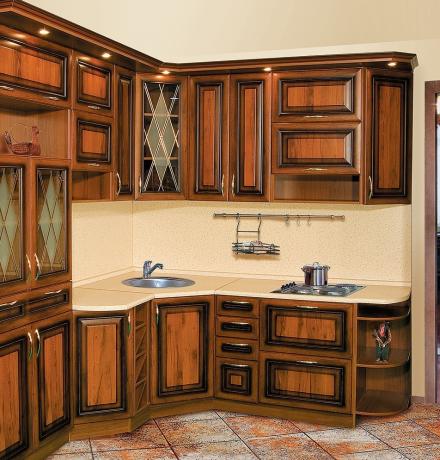
Chic frame facade for the kitchen
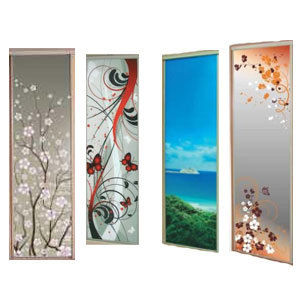
Glasses with any pattern can be put into the frame facade
The most famous and popular facades, which are frames made of MDF panels, and into which various materials can be inserted (rattan, glass, chipboard, plastic, etc.). As a rule, the frame is wrapped in veneer, or in a more affordable version - PVC film.
Pros:
- The ability to manufacture non-standard elements without increasing the price;
- Acceptable price;
- They are lightweight compared to facades made of pure MDF and wood;
- Glass in the kitchen facade you can insert it yourself;
- A large selection of all kinds of inserts, which allows the designer to design innumerable projects.
Minuses:
- Poorly tolerated high humidity;
- Low wear resistance;
- Peeling of the coating from the base;
- They create many problems when leaving (they are difficult to wash and wipe);
- Often you come across facades with weak frame fastening.
Attention!!!
When choosing a new facade, consider your financial capabilities. For example, wooden facades are very expensive.
If you do not like the above options, and you are still thinking: "which facade to choose for the kitchen?", Then we propose to consider another type.
MDF facades covered with PVC film

Facade covered with a beautiful PVC film
At their rather low cost, such facades provide designers with a wide flight of imagination. They are matte and glossy. If you do not know which kitchen facade to choose, and are a little constrained in funds, then this option is perfect for you. Kitchen sets with such a facade are often used when creating a classic design, because here it is possible to choose a color that imitates natural wood.
Pros:
- A wealth of colors and all kinds of drawings;
- Affordable price;
- Resistant even to severe mechanical damage;
- Ease of maintenance (PVC film perfectly tolerates direct contact with vinegar, acid, household chemicals, etc.);
- The ability to manufacture facade elements of any shape and size, which will not affect the cost.
Minuses:
- The film imitates the woody structure well, but looking closely you can easily notice a fake;
- PVC film can peel off from MDF panels when exposed to high temperatures (over 75 ° C).
If this type did not suit you, then your choice of facades for the kitchen can be stopped on the facades of MDF or chipboard, covered with HPL laminate. They are made by gluing facing plastic on MDF or chipboard base.
In most cases, the ends of such a facade are made according to the postforming method. Outwardly, it looks something like this: on both sides the plastic ends are bent to the ends, and on the other two ends they are pasted over with a pretty edge.
Many manufacturers of such panels do it more thoughtfully - all four ends are processed with PVC, acrylic edging, aluminum edging or ABS. What's interesting is that the color of the edge can be the same as the main color, or differ.

Kitchen facade covered with HPL plastic
Note!!!
In search of an answer to the question: "which facade to choose for the kitchen?", We practically missed such an important argument as colors.
Modern kitchen design provides not only monochrome and bright solutions, but also facades with a pattern!
By the way, the laminated plastic facade itself has a unique manufacturing technology: several layers of paper are pressed, which is impregnated specially developed resins, under high pressure and elevated temperature, which allows to obtain unsurpassed beauty and quality material.
Pros:
- High indicators of moisture resistance;
- Compared to other facades, it has a maximum service life;
- High indicators of resistance to mechanical damage;
- Do not fade in the sun;
- Resistant to chemical attack;
- Opportunity manufacturing of curved kitchen facades.
Minuses:
- Fingerprints remain on the glossy finish;
- In most cases, the back is perfectly white;
- Matte plastic is difficult to wash;
- These facades, manufactured using the cold press method, may have some geometric defects.
Wooden kitchen fronts
Knowing which facades to choose for the kitchen, let's dwell on another issue - how to choose facades for the kitchen. If you are a wealthy person and you like to rely on reliable classic solutions, then wooden facades are what you need.
Despite their external bulkiness, they will perfectly fit into any interior. But facades made of natural wood are the most expensive.
Pros:
- They look expensive and give the interior a certain aristocracy;
- With proper care, they can serve indefinitely;
- Are not subject to fashion trends and will look great even after 30 years;
- They have many decorative elements (inserts, cornices, balustrades, pilasters).
Minuses:
- Too expensive (ordinary citizens cannot afford such a luxury);
- Have a number of special care requirements;
- Dim quickly from direct sunlight;
- Over time, they begin to absorb moisture and odors;
- A rather meager lineup.

Example of a wooden facade

Pine kitchen facade
Conclusion
We hope our article helped you answer the questions - how to choose a facade for the kitchen and which kitchen facade to choose. The modern market is incredibly rich in all kinds of kitchen facades, but if you understand materials, and you will know all their characteristics, then you will not be taken by surprise by the question - how to choose a facade kitchen?
And if you also know how to use a woodworking machine, then you can make a facade with your own hands, ordering separately only its processing and painting. You can get more detailed information on kitchen facades by looking at photos and videos on our website. Good luck with your choice!
Gallery
